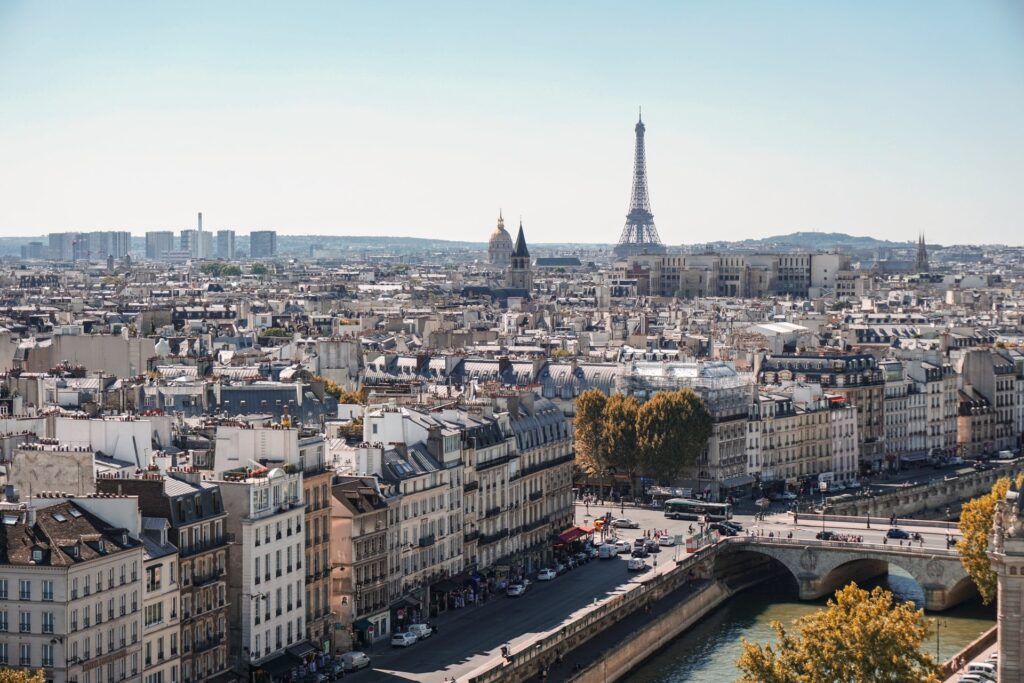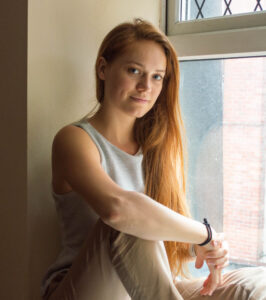A complete guide of each arrondissement to plan your trip. Have the best experience with this local’s insight on where to go and places to skip.

Before telling you about each arrondissement, here are a few numbers about Paris.
The French capital is home to 2.2 million people. It doesn’t sound like much and here’s the reason why: Paris is tiny, in comparison London is nearly 15 times bigger and New York is more than 7 times bigger.
On top of its size, there’s a law forbidding create creation of new buildings higher than 7 floors to avoid destroying the famous skyline. This law was written in the 70s after the disastrous Montparnasse Tower was built. This tower has the best view in all of Paris, given that once you stand on it, you don’t see it anymore.
So there’s physically no space for more people to live inside Paris. You’ll find 10 million people living in the suburbs around it, and some even commuting everyday from further away still.
To organise the city, it has been divided into 20 districts or “arrondissements” in French.
They are mapped like a snail shell, the first arrondissement is in the middle and the number gets bigger swirling around from there.
Each of these arrondissements is unique due to its location, architecture, culture, shops. Please find below key information about each of them.
1st Arrondissement
You can’t go wrong with the first district. It’s home to the Louvre museum, Tuileries, Palais-Royal. If you’re visiting Paris, you cannot avoid it.
But visiting it and staying in it are 2 different things. It’s very expensive due to its tourism high drive, the bars and restaurants aren’t fun and they are tourist traps, so comes night time when the museums are closed, it gets a bit dull.
Nevertheless, it’s at least a must-see and it’s architecture is exactly what you have in mind when you think of Paris.
The Halles shopping centre is also in this district, that’s most Parisians meet-up place due to its central location. Around it are a few chill restaurants and bars as this area is further away from the touristic action. But they’re all usually very crowded.
2nd Arrondissement
It’s as central and beautiful as the first one. However, it doesn’t have the same touristic value which makes it more locals friendly.
The 2nd district is home to fancy restaurant and fun bars, and it’s fun to walk around in.
3rd Arrondissement
This is where is truly gets good. This is a more fashionable area for locals and for good reasons.
The 3rd and 4th arrondissements constitute a neighbourhood called “le Marais”. If every Parisians could live somewhere, it’s there.
The shops are great, not mainstream and made for locals rather than tourists. Restaurants and bars are trendy. It’s also a diverse and visionary area with the LGBT community.
It’s also full of cultural attractions and history.
Specific to the 3rd arrondissement is the Republic square. This is where people are most likely to hold their protest, and everyone knows someone is always protesting in France, or on strike.
4th Arrondissement
It’s every bit as good as the third district but slightly more central.
The Centre Pompidou, a contemporary museum, is in the 4th arrondissement. And so are “l’Île de la Cité” and “l’Île Saint Louis”, the two small islands in the heart of Paris. L’Île de la Cité is called so because it was home to the first settlement during the first century BC. It’s the bigger one of the two islands and it’s actually divided in between the first and fourth arrondissements.
On this island, you’ll also find the Notre-Dame Cathedral and the Holy Chapel.
5th Arrondissement
It’s on the other side of the Seine river. This side, even though in the South, is called the left side or “la rive gauche” in French. All the arrondissements we talked about until now are on the right side or “la rive droite”.
There’s quite the divide between the two sides, nothing major, but everyone claims their side is better.
The 5th district fosters universities, the Panthéon, the Plant Garden, antic arenas and the Great Mosque of Paris. In spite of all those landmarks, it’s not completely full of tourists, which still makes it enjoyable for locals.
6th Arrondissement
The most central district of the left side, its famous neighbourhood is Saint-Michel. This neighbourhood has many touristic restaurants, I wouldn’t recommend eating in any of them, they are overpriced due to their location and honestly look like poor quality, I even wonder if their food is homemade. I would flag these as tourist traps.
Otherwise, this arrondissement is full of history and it’s great to walk around in.
The Luxembourg garden is very pleasant to lounge about or even have a picnic in. Drinking on the street is legal in France, so you should make the most of outdoor spaces. I should warn you that whilst it’s legal to drink outside, it’s illegal to be drunk on the street, I assume it’s to avoid drunk people making a mess or annoying police officers. They don’t test every pedestrian alcohol level but try to keep it lowkey.
7th Arrondissement
I can guarantee that every single tourist will go to this district for one obvious reason: the Eiffel Tower. It’s also where you’ll find Les Invalides, the Quai d’Orsay museum and the Quai Branly museum. There are many embassies and government offices in this arrondissement too.
If all districts mentioned above are fancy because of architecture, location and prices, the 7th arrondissement is in another league.
Among locals, we’ll call the 7th, 8th and 16th arrondissements “the rich neighbourhoods”, not everyone can afford to live in these Paris districts.
8th Arrondissement
The 8th arrondissement and its Champs-Élysées are to Paris what the 5th Avenue is to New York.
You’ll find luxury shops and restaurant there, as well as the Arc de Triomphe on one side and the Concorde square on the other.
Champs-Élysées are more famous and therefore a tourist attraction, the lesser known Montaigne avenue has more luxury shops.
I wouldn’t spend too much time there, unless you’re in need of a Chanel dress or a Louis Vuitton bag, as it doesn’t channel the true Parisian spirit to me.
9th Arrondissement
Department stores and the Garnier Opera are the main landmarks of this districts. The night life can be lively too, especially around Pigalle. And apart from the 18th arrondissement that you’ll find below, the 9th arrondissement is the last one with high touristic value.
The Opera square is great to take pictures, it’s beautiful and often host aspiring artists playing live music.
10th Arrondissement
This is a cosmopolitan area of Paris. The Saint-Martin canal is lovely to hang out at especially during the summer with friends. However, I wouldn’t venture too close to Gare du Nord and Gare de l’Est, especially at night. I don’t feel safe there as a woman, and I would assume tourists are seen as easy targets for pickpockets.
11th Arrondissement
You’ll find the Bastille square in between the 4th and the 11th arrondissements.
However, that’s not why the 11th district is known among locals.
This is where Parisian nightlife is peaking. Bars, restaurants, theatres, this is where you want to be when museums and other sightseeings are closed. I’d recommend Roquette street or Oberkampf to find a place to eat or have a drink.
12th Arrondissement
Not much happening in the 12th district or the following arrondissements apart from the 18th.
Bercy is an entertaining neighbourhood for locals with concerts, cinema, shops and restaurant.
On the outside of the district is the Bois de Vincennes, a large outdoor space especially welcomed during warmer months to have picnic with friends and family.
13th Arrondissement
I’ll be honest, I can probably count on one hand the amount of times I went to this district. It has nothing especially attractive culture wise, the architecture is not great as it was built later than the city centre above.
There might be a few nice places to eat and drink for people living there, but if you’re living outside this arrondissement, there’s nothing to motivate your visit.
14th Arrondissement
This district too is mostly residential. Its highlights are the catacombs and the Fondation Cartier.
If you’re in need of a less crowded park, you can check out Parc Monsouris.
15th Arrondissement
This is the home of the infamous Montparnasse Tower, there’s also a hot-air balloon for a lesser known activity in the André-Citroën park.
If you’re going to Paris for a fair, chances are it will be held at the Paris Expo exhibition centre.
16th Arrondissement
Mainly residential, this arrondissement has a few interesting museums such as the one about architecture and heritage and the Fondation Louis Vuitton.
There are a few outdoor places as well such as the Bois de Boulogne, I’ll warn though that it is most famous for its ladies of the night.
17th Arrondissement
This is a family friendly residential district with enjoyable outdoor places such as the Monceau Park (in between the 8th and the 17th arrondissements), the Martin Luther King park or the Batignolles square.
18th Arrondissement
This is my favourite among all the arrondissements. I don’t usually hang out in the south of it with Pigalle and the Moulin Rouge. Nor do I go northern than the Sacré-Cœur. But everything in between those is amazing. It’s got its vibe of its own.
The Sacré-Cœur is the most magnificent landmark in my opinion, it also has the best free view of Paris. The neighbourhood right below is called Montmartre, if you enjoy Amélie Poulain it’s where you want to be. It’s where all Parisian artists lived and probably still do.
It’s the host of many theatres and smaller museums.
You’ll also find the best restaurants to have brunch in Abbesses street, where you’ll also encounter the “Mur des je t’aime”, a wall with all the translations of the phrase “I love you”, so romantic.
Nevertheless, the northern part is quite dangerous, I got my phone stolen from my pocket there, plus the architecture isn’t great.
19th Arrondissement
This district is on the rise, it’s getting trendier. You wouldn’t miss anything if you didn’t see it though. There are no particular landmark to see, but living there is becoming more enjoyable.
One thing to visit there is the Buttes Chaumont park, where true wilderness seems to invade the big city, it’s quite the contrast. I would skip the rest.
20th Arrondissement
The only famous thing about it is the Père Lachaise cemetery where celebrities are burried. I don’t find visiting a cemetery an appealing activity, but if that’s your thing, you do you.
Other than that it’s mostly a residential area, and not a particularly pretty one.
That concludes my overview of all of Paris districts as an insider. I hope it helps to plan a trip to Paris or maybe even a move there. The so-called residential districts aren’t bad in themselves, I just would lose precious traveling time on them.
Don’t hesitate if you have any question or if you need more recommendations.


